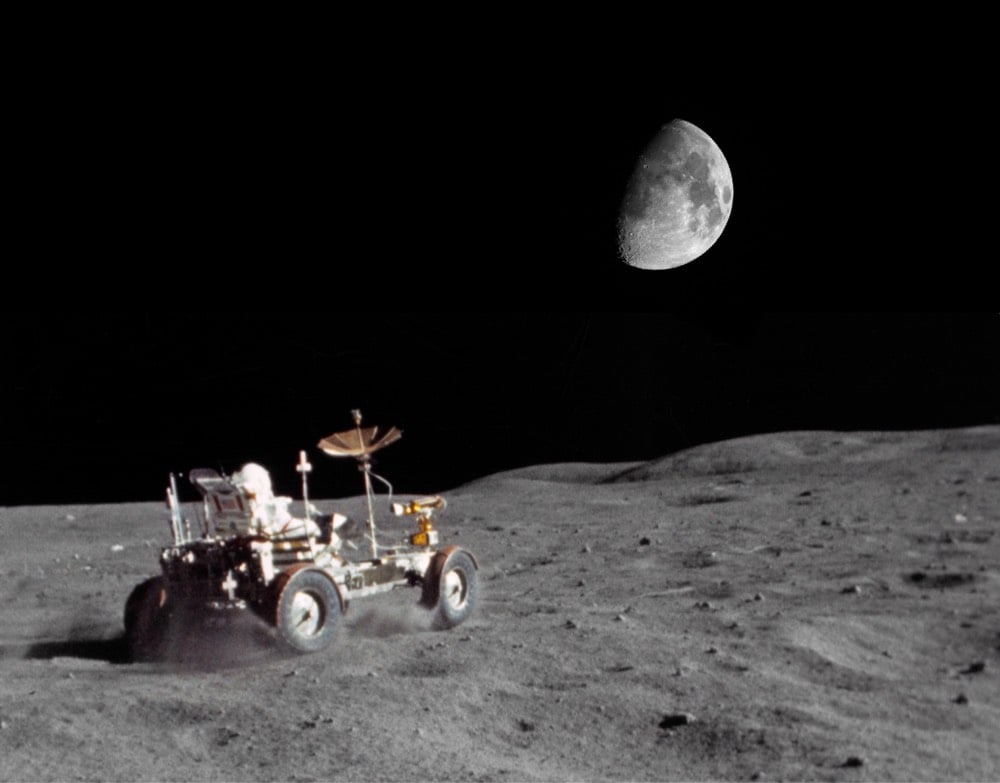Fly Me to the Moonmoon

In a paper called “Can Moons Have Moons?”, a pair of astronomers says that some of the solar system’s moons, including ours, are large enough and far enough away from their host planets to have their own sizable moons.
We find that 10 km-scale submoons can only survive around large (1000 km-scale) moons on wide-separation orbits. Tidal dissipation destabilizes the orbits of submoons around moons that are small or too close to their host planet; this is the case for most of the Solar System’s moons. A handful of known moons are, however, capable of hosting long-lived submoons: Saturn’s moons Titan and Iapetus, Jupiter’s moon Callisto, and Earth’s Moon.
Throughout the paper, the authors refer to these possible moons of moons as “submoons” but a much more compelling name has been put forward: “moonmoons”.
Moonmoon is an example of the linguistic process of reduplication, which is often deployed in English to make things more cute and whimsical. In the pure form of reduplication, you get words like bonbon, choo-choo, bye-bye, there there, and moonmoon but relaxing the rules a little to incorporate rhymes and near-rhymes yields hip-hop, zig-zag, fancy-shmancy, super-duper, pitter-patter, and okey-dokey. And with contrastive reduplication, in which a word repeats as a modifier to itself:
“It’s tuna salad, not salad-salad.”
“Does she like me or like-like me?”
“The party is fancy but not fancy-fancy.”
“The car isn’t mine-mine, it’s my mom’s.”
Fun! And astronomy should be fun too. Let’s definitely call them moonmoons.





Stay Connected